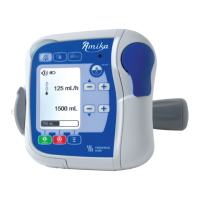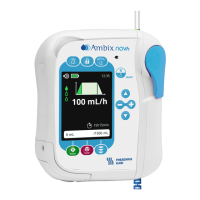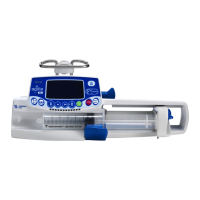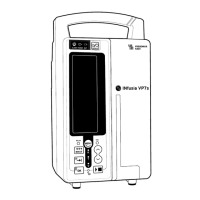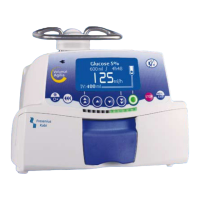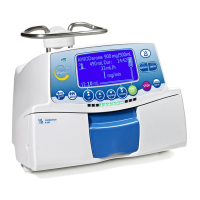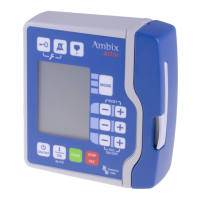What does 'Waiting settings !!' mean on my Fresenius Kabi Agilia SP Water Pump?
- MMatthew LawrenceSep 7, 2025
The message 'Waiting settings !!' indicates that a value must be entered. Enter the required value and press OK to confirm.
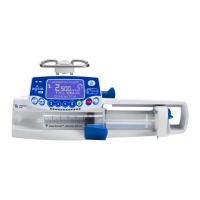
What does 'Waiting settings !!' mean on my Fresenius Kabi Agilia SP Water Pump?
The message 'Waiting settings !!' indicates that a value must be entered. Enter the required value and press OK to confirm.
What does 'Remove completely syringe !' mean on my Fresenius Kabi Agilia SP?
The message 'Remove completely syringe !' is a preventive auto-test indicating a potential failure of the plunger head. Remove and reinstall the syringe.
What does 'Disengagement mechanism !!!' mean on my Fresenius Kabi Water Pump?
The 'Disengagement mechanism !!!' message indicates that the disengagement mechanism is open after a syringe has been selected. Check the syringe installation.
What should I do if my Fresenius Kabi Agilia SP shows 'Pressure increase !'?
If the device displays 'Pressure increase !', check for occlusions in the infusion line.
What does 'Drop in pressure !' mean on my Fresenius Kabi Agilia SP Water Pump?
If the device shows 'Drop in pressure !', check the downstream Luer lock connection and the integrity of the entire line.
What does 'Keypad locked' mean on my Fresenius Kabi Agilia SP Water Pump?
The 'Keypad locked' message indicates that the syringe barrel clasp was opened and closed. Unlock the keypad.
| Manufacturer | Fresenius Kabi |
|---|---|
| Model | Agilia SP |
| Accuracy | ± 5% |
| Volume Range | 0.1 to 9999 mL |
| Power Supply | 100-240 VAC, 50/60 Hz |
| Alarms | Occlusion, Air-in-line, End of infusion, Low battery |
| Certifications | CE, IEC 60601-1 |
| VTBI (Volume To Be Infused) | Programmable |
Defines the applicability of the technical manual to the Agilia SP range.
Describes the intended use of the Agilia SP range infusion system for delivering parenteral fluids and medications.
Explains the programmable electronic medical system for administering fluids via a syringe pump.
Specifies that the pump must only be used by qualified and trained healthcare professionals.
Lists contraindications, including not modifying the pump and avoiding specific fluids or environments.
Details the required operational conditions for proper pump performance.
Provides a detailed description of the pump's physical components and layout.
Explains the operational principles of the pump's sub-assemblies.
Illustrates the operational flow and components of the pump system.
Outlines the three training levels required for maintaining and preserving the equipment.
Details the preventive maintenance schedule and quality control checks required for the pump.
Explains how to access and exit the pump's operating functions and menus.
Guides users on how to access the pump's profile menu.
Describes the functions available within the profile menu.
Explains how to access the basic profile configuration settings.
Details the functions available for basic profile configuration.
Describes the options available within the maintenance menu for pump servicing.
Details the systematic tests to be run after calibrating sensors and obtaining certificates.
Details the procedure for performing quality control checks on the pump.
Describes the process for testing the pump's flow rate accuracy and calibration.
Lists alarm messages, their priority, and corresponding problems or resolutions.
Provides a guide to troubleshoot common issues, their causes, and recommended actions.
Lists error codes, their descriptions, and recommended actions for resolving them.
Details the procedure for battery replacement and boost capacitor discharge.
Describes the step-by-step procedure for removing and replacing the upper case.
Outlines the procedure for replacing the display board or LCD display.
Details the procedure for removing and replacing the CPU board.
Explains the procedure for replacing the power supply and AC power boards.
Outlines the procedure for replacing the Wi-Fi board.
Details the procedure for replacing the syringe barrel clasp.
Describes the procedure for replacing the syringe detection system.
Outlines the procedure for replacing the pump's motor.
Details the procedure for replacing the disengagement flexible circuit.
Explains the procedure for replacing the force sensor and ribbon cable kit.
Outlines the procedure for replacing the linear sensor kit.
Details the procedure for replacing the plunger cover and lever kit.
Describes the procedure for replacing the plunger kit.
Outlines the procedure for replacing the carriage kit.
Specifies when cleaning and disinfecting of the pump is required.
Lists recommended and prohibited agents for cleaning and disinfecting the pump.
Provides instructions for effective cleaning and disinfecting of the pump.
Lists precautions related to the AC power supply for the pump.
Outlines precautions regarding the pump's battery to prevent potential hazards.
Explains how the device provides power in case of AC power failure and battery charging.
Details the AC power supply specifications and requirements for the pump.
Provides information on the pump's battery characteristics, including life and recharge.
States the typical power consumption of the infusion pump.
Describes the connector for data communication with a PC.
Explains the pump's wireless optical communication using an infrared cell.
Details the specifications and function of the Agilia USB cable for communication.
Lists the standards and certifications the pump complies with regarding safety and EMC.
Provides the physical dimensions and weight of the pump.
Lists the electronic boards that equip the Agilia SP MC, MC WiFi, and TIVA pumps.
Details the materials used for various pump components.
Lists the essential features of the pump and refers to relevant sections for details.
Covers electromagnetic compatibility and ESD precautions for the pump.
Specifies the RF transmitters and frequencies used by the Agilia infusion pumps.


